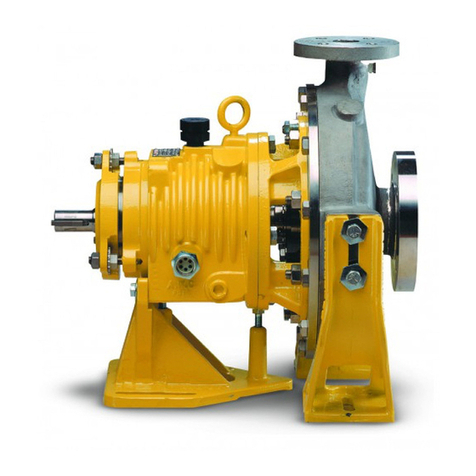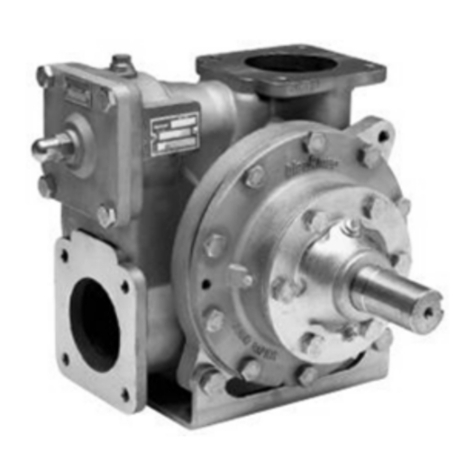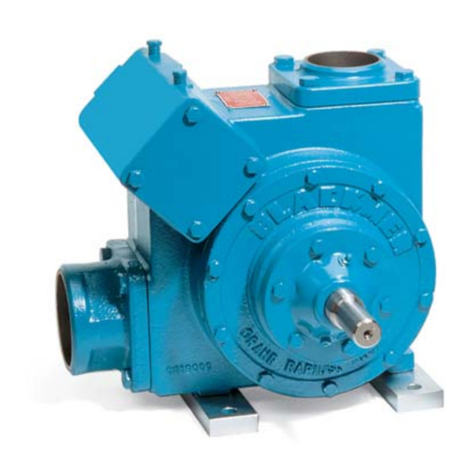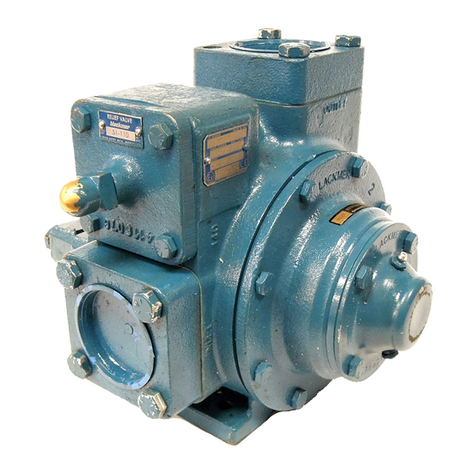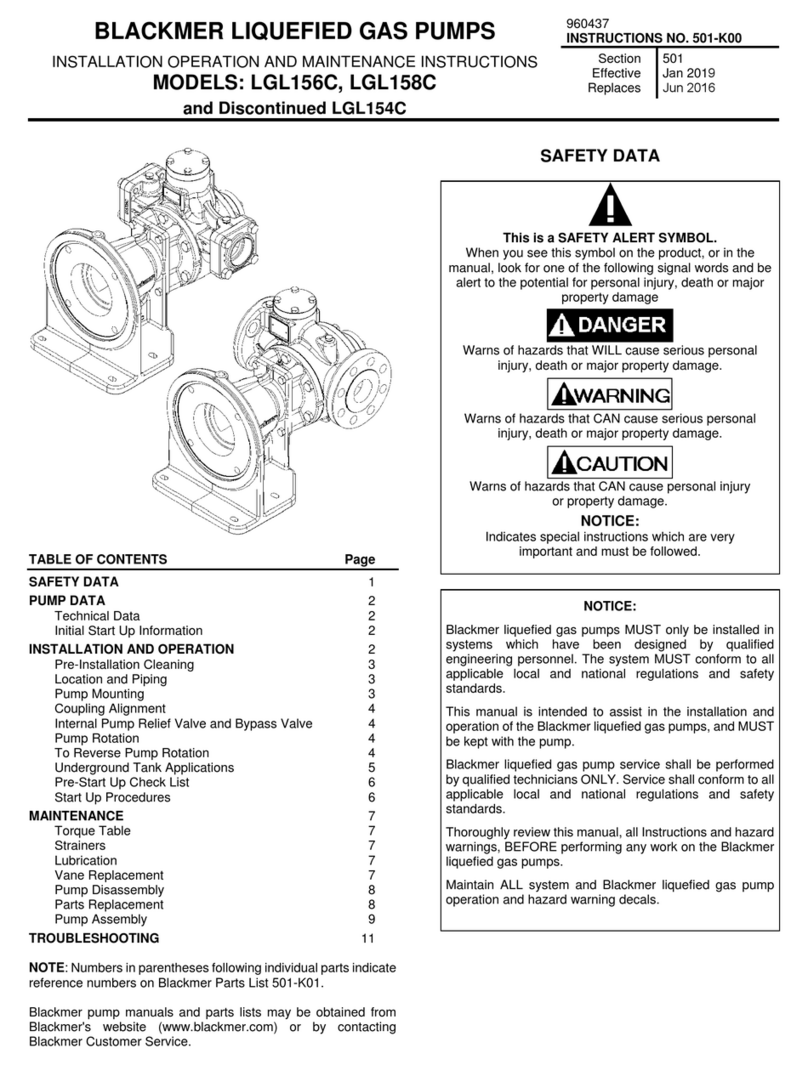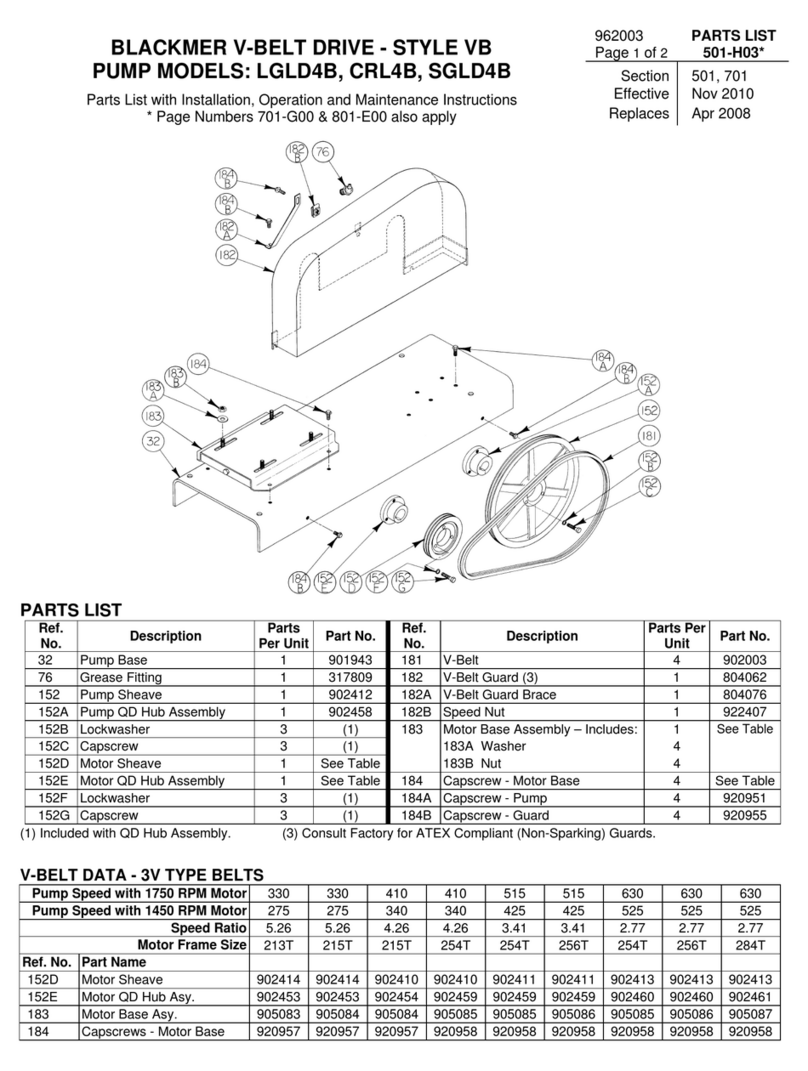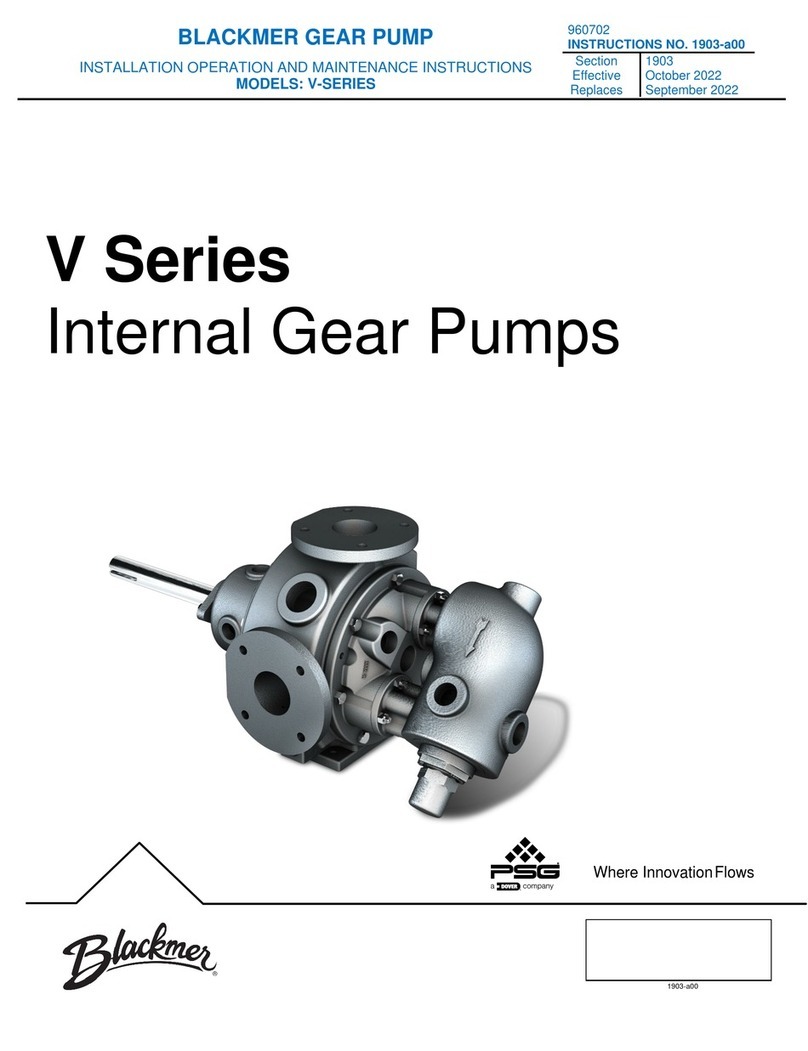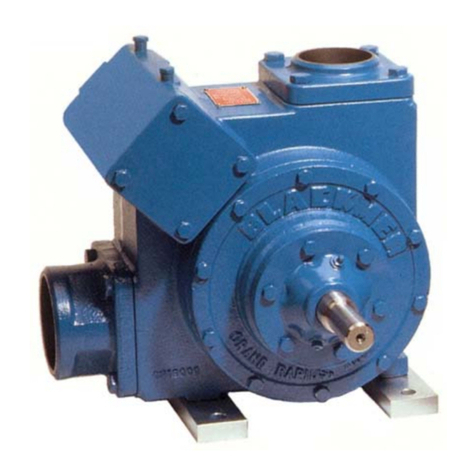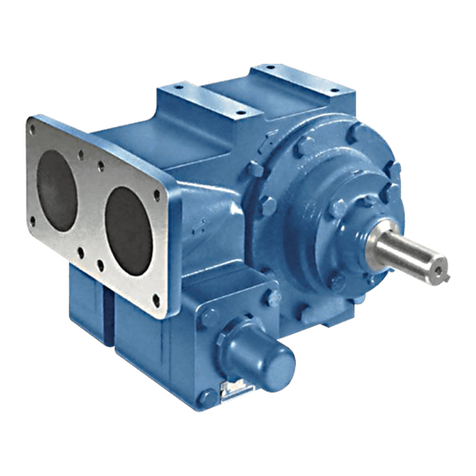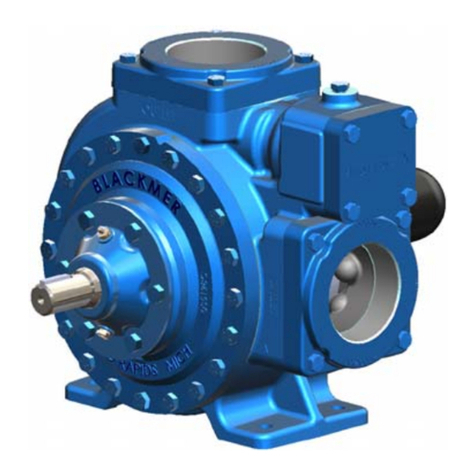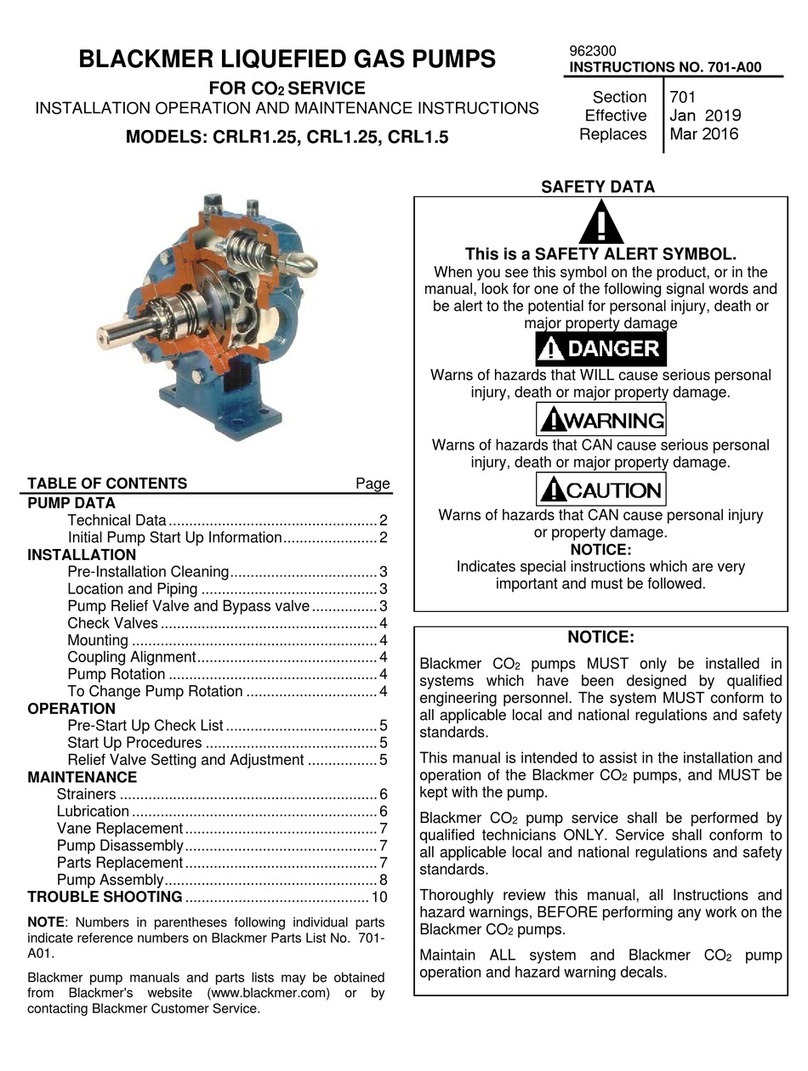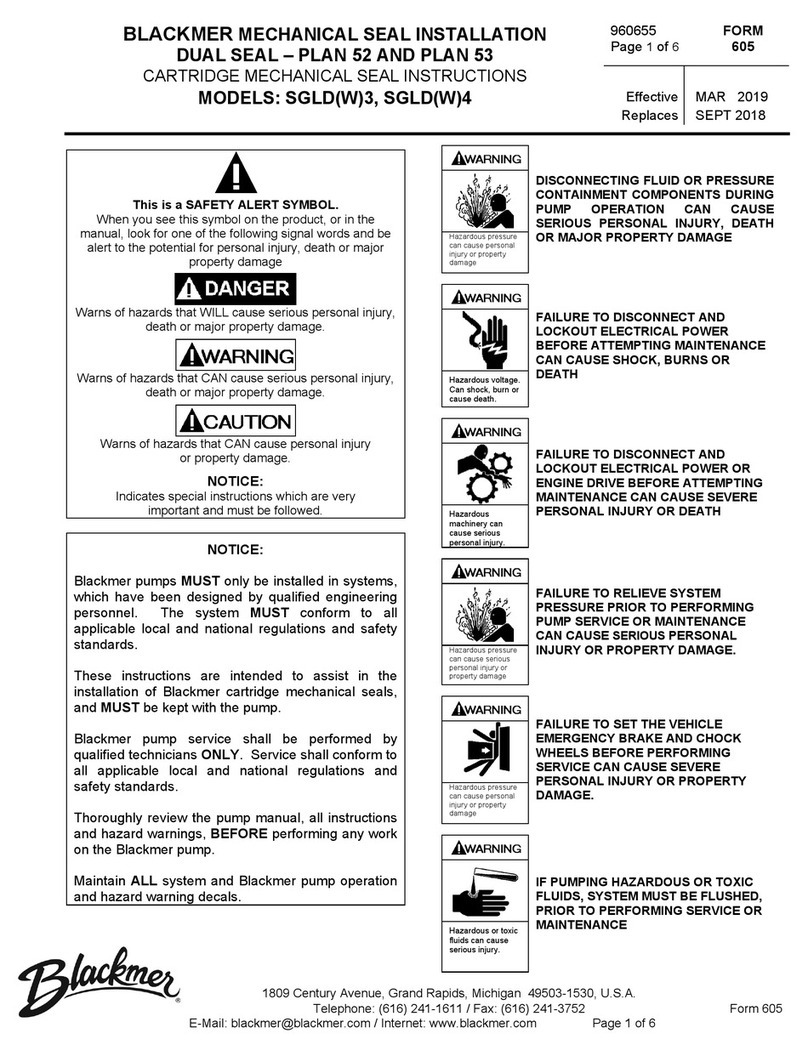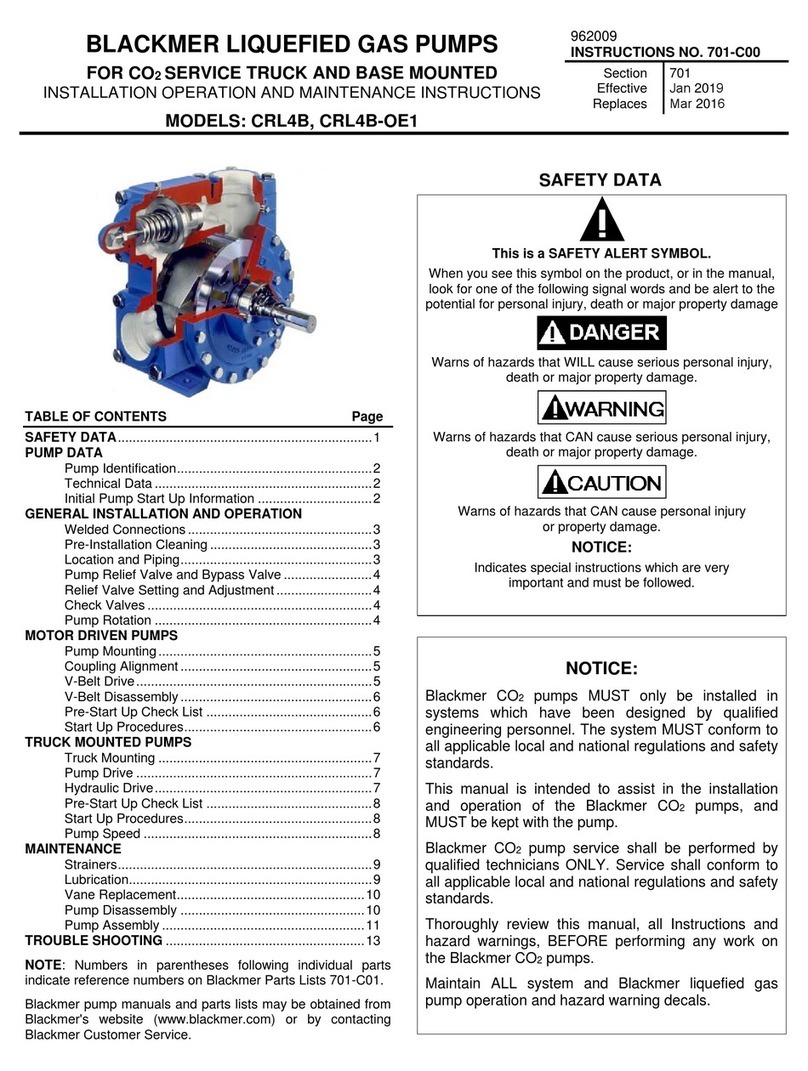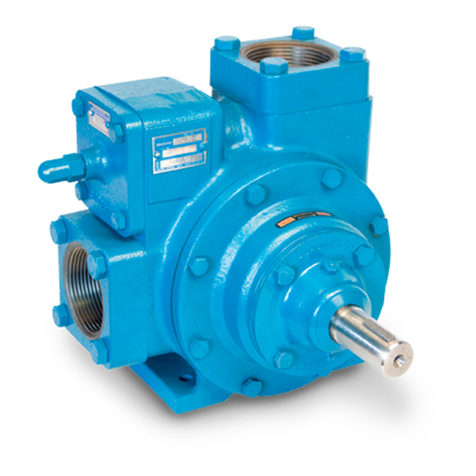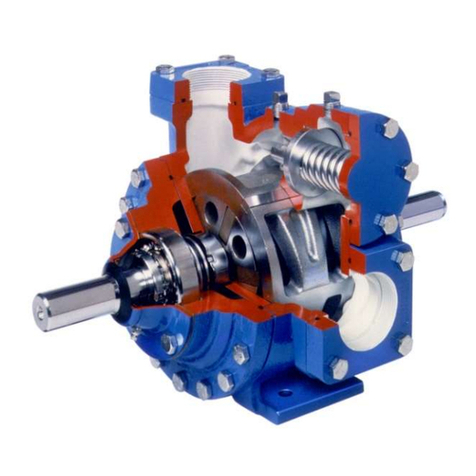INSTALLATION AND OPERATION - CRL TRUCK MOUNTED PUMPS
6
TRUCK MOUNTING
CRL pump models can be bolted to the truck frame or on a
saddle hung below the frame, and MUST be adequately
supported.
Discontinued TCRLF4A pump models are designed to flange
mount directly to bob tail or transport tank in combination with
a commercial internal control valve. See Figure 6.
PRE-INSTALLATION CLEANING
Foreign matter entering the pump WILL cause extensive
damage. The supply tank and intake piping MUST be cleaned
and flushed prior to pump installation and operation.
LOCATION AND PIPING
An improperly designed piping system or improper unit
installation WILL significantly reduce pump performance and
life. Blackmer recommends the following piping system layout
and unit installation.
1. When locating the pump on the tank, safety must be the
first consideration. Other considerations include length of
drive line, accessibility for maintenance and convenience
of connections. See Figure 6.
2. The discharge hose and fittings must be large enough to
minimize the pressure drop in the system. The lower the
friction loss, the higher the flow rate.
3. Use a 11/2" or 2" vapor return line for all transport loading
and unloading. Without a vapor return line, back pressure
will build up in the receiving tank and pressure will be
reduced in the supply tank, resulting in reduced flow rate
and fluid bypassing.
4. Keeping the liquefied gas systems full of liquid, even when
idle, will keep the O-rings from changing shape, shrinking
or super cooling. Evaporation of liquefied gas leaves an
abrasive powder on the surface which can cause wear to
the pump, meter, and seals.
AUXILIARY INLET - DISCONTINUED TCRLF4A
PUMP MODELS
The auxiliary inlet port can be used as a fill connection for
bottom loading of the tank by stationary pumps at the terminal
or bulk plant. It can also be used as an auxiliary pump inlet,
allowing the pump to unload another tank in an emergency. To
minimize vapor formation, the auxiliary intake line must be as
large in diameter as the intake connection and as short as
possible. The line must be connected through a suitable
strainer, minimum 40 mesh. Reduce pump speed to a
maximum 400 RPM when using the auxiliary inlet to reduce
cavitation.
PUMP DRIVE
The pump may be driven by a power take-off through universal
joints. When using universal joints, a splined slip joint,
properly lubricated, must be used on the connecting jack shaft
to prevent end thrust on the pump shaft.
It is very important to install a proper drive line to avoid
excessive wear, vibration and noise (see Fig. 6 and Table 2).
General guidelines to follow for proper pump drive:
1. Do not use square slip joints.
2. Use the least number of jack shafts as is practical.
3. Use an even number of universal joints.
4. The pump shaft and power take-off shaft must be parallel in
all respects. Use an angular level measuring device to
ensure the PTO and pump shaft are parallel to each other.
The PTO shaft coming off at the transmission does not
need to be perfectly horizontal as long as the pump shaft is
parallel in all respects to the PTO shaft.
5. The yokes of the universals at both ends of the jack shaft
must be parallel and in phase.
6. The maximum recommended angle between the jack shaft
and the pump shaft is 15 degrees. Refer to Table 2.
Failure to follow any of these guidelines may result in a gallop
or uneven turning of the pump rotor, which will in turn cause a
surging vibration to the liquid stream and piping system.
Contact the supplier of the drive line components for specific
design assistance.
NOTICE:
BLACKMER CO2 TRUCK PUMPS MUST ONLY BE
INSTALLED IN SYSTEMS DESIGNED BY QUALIFIED
ENGINEERING PERSONNEL. SYSTEM DESIGN MUST
CONFORM WITH ALL APPLICABLE REGULATIONS
AND CODES AND PROVIDE WARNING OF ALL
SYSTEM HAZARDS.
FAILURE TO SET THE VEHICLE
EMERGENCY BRAKE AND CHOCK
WHEELS BEFORE PERFORMING
SERVICE CAN CAUSE SEVERE
PERSONAL INJURY OR PROPERTY
DAMAGE.
Hazardous machinery
can cause severe
personal injury or
property damage.
Table 2
Angle of Drive Shaft
1othrough 5o6othrough 10o11othrough 15o
Very Good Good Fair
HYDRAULIC DRIVE
CRL pumps may also be driven hydraulically. Hydraulic
motors must be well supported with their shafts parallel to the
pump shaft in all respects. Blackmer provides an optional
close-coupled hydraulic motor adapter. The adapter provides
for straight alignment of a hydraulic motor drive through a solid
coupling connected to a straight key pump shaft. This
coupling connection requires grease lubrication every three
months at minimum. Refer to the "Lubrication" section of this
manual.
Hazardous
machinery can
cause serious
personal injury.
A DRIVE SHAFT GUARD BETWEEN
THE PTO AND PUMP MUST BE
PROVIDED TO PREVENT PERSONAL
INJURY, PROPERTY DAMAGE, OR
DEATH.




